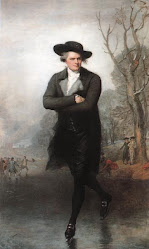MRS. LUKE WHITE d. 1799
AND HER SON
Elizabeth de la Maziere, of Dublin, Ireland. In 1781 she married Luke White. According to family tradition, the boy in this double-portrait is her fourth and youngest son, Henry (1798-1873) who was created Baron Annaly in 1863, in which case the picture was painted later than 1790, but it is imossible to establish this with certainty, as a living descendent expresses the opinion that the child might be her second son, Samuel.
Dublin, c.1790. Shown at half-length, Mrs. White is seated, turned half-way to the right, with her hazel eyes directed at the spectator. She has a wealth of hair, powdered gray, and she is dressed in a white dress, with a pale yellow silk shawl over her shoulders and arms. A black velvet ribbon encircles her neck. On her lap she holds her small boy, who has long, blond har and whose gray eyes are directed at the spectator. He presses his head to his mother's cheek, is turned half-way to the left, and puts his left hand on his mother's shoulder. He is dressed in a white dress with large ruffled collar and a pink sash. The background shows trees, sketched in brown, to the left and above the figures, and a distant landscape of hills and sky in blue and yellowish-pink at the right.
This double-portrait has the same history as the companion picture of Luke White by Stuart. It is now owned by Henry Reinhardt & Son, NY.
The present Lord Annaly owns a copy of this picture, and another copy was sold at the auction of Lord Massy's belongings in 1916 to a furniture dealer. Who painted these copies is unknown.
Thus, Lawrence Park indicates that there exists in fact 3 portraits of Mrs. Luke and her son (note that this one does not have the landscape touches mentioned by Park). Lawrence clearly thought that the one he was looking at was the original.... but the auction house declares that the portrait it auctioned on Oct 5, was a copy, BY STUART, of the original Stuart! (thus an original Stuart)
This is getting confusing~
From Doyle Auction House:
**
Provenance:
By descent in the White family in Ireland
Scott & Fowles, NY, acquired from the above, 1920
Ehrich Galleries, NY, 1930
Mrs. James B. Higgin, NY, acquired from the above
Wildenstein and Newhouse Gallery, NY, by 1932
Leroy Ireland, acquired at auction, c 1940
Ernest Closuit, Fort Worth, TX, acquired from the above, 1944
Southern Methodist University, Dallas, TX, acquired from the above, 1959
Morton Kornreich, Harrison, NY, c 1980
A label on the back of the auctioned portrait describes the work and identifies Wildenstein/Newhouse as part of the provenance, and indicates that the other related portrait is at the Toledo Museum of Art.
A portrait described by Lawrence Park (no.903) as the original from which Stuart painted the present work, presently in the permanent collection of the Toledo Museum of Art, is now believed to be a copy. It appears that the location of the original double portrait is unknown.
**
~~~~~~~~~~~~~~~~~~~~~~~~~~~~~~~~~~~~~~~~~~~~~~~~
Well, to my eye, the portrait that was auctioned, looks to be a Stuart original. But, where is the ...original original...? The #903 portrait from Park (see below) shows hands that are perfect; Stuart did not particularly like doing hands....But, if it is not a Stuart, it is a beautiful, magnificent copy, at least the black and white image. And Park was convinced apparently that it was original.
The person who would know the authenticity of these portraits would be Carrie Barratt, who has the most up-to-date accounting of all Stuart portraits. But looks to me like Doyle House auctioned a genuine Stuart. A reputable auction house would give the most latest accurate information on a portrait. Lawrence Park shows an unfinished portrait of these two, #904, which must be considered the original, then Stuart used this unfinished portrait to complete the final painting. Apparently this unfinished portrait has not been located.
The Stuart portrait of Mrs White was sold for $43,750.00. The estimate was $20,000.- $40,000.









.jpg)









